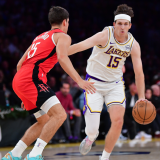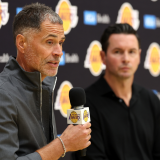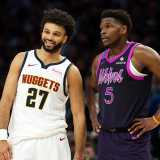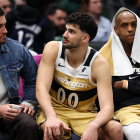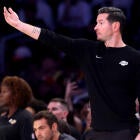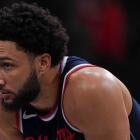What teams picking early in 2024 NBA Draft can learn from Mavs, Celtics: Do your intel, don't sweat narratives
This season's NBA champion will have been built by the trade that led to drafting a superstar talent; how those trades materialize is another story
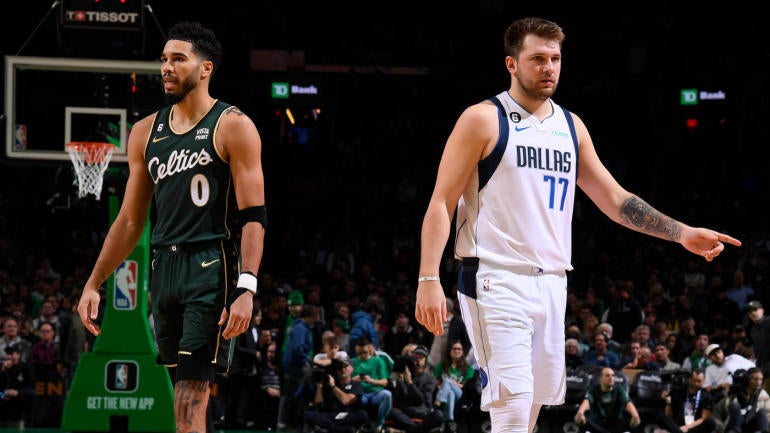
Giannis for the Bucks. Steph for the Warriors. Jokic for the Nuggets.
The last three NBA championships have been built by finding the diamonds in the rough on draft night. This year, either the Boston Celtics' Jayson Tatum or the Dallas Mavericks' Luka Doncic will add to that list, but with an added variable: this season's NBA Finals champion will have been built by the trade that led to drafting a superstar talent.
For the Celtics, the opportunity to draft both Tatum and Jaylen Brown is rooted in a June 2013 trade with the Brooklyn Nets, in which they sent a package based on Kevin Garnett and Paul Pierce for what was essentially spare parts and significant draft assets. Those assets included three unprotected first-round picks, one of which became Brown in 2016, and a pick swap in 2017 that became the first overall pick in the draft.
In the 2017 draft, Markelle Fultz was the consensus top prospect. Then, Boston GM Danny Ainge traded the first overall pick to the 76ers for the third overall pick, Tatum, and additional draft compensation.
In short, the Celtics wanted Tatum, their intel told them he would still be available at 3, and so they picked up another asset and still got their guy.
For the Mavericks, their franchise-altering draft deal occurred a year later in 2018. They had the fifth pick after finishing the 2017-18 season with a 24-58 record. Atlanta had the third pick. After Phoenix and Sacramento took Deandre Ayton and Marvin Bagley, respectively, Dallas and Atlanta swapped picks, with the Mavs adding a top-5 protected pick a year later in 2019 to get it done.
In short, the Mavs wanted Luka Doncic and they got him. The Hawks knew they could still get Trae Young at No. 5 and that they'd be adding an additional draft asset.
What are the implications for this year's draft? They're twofold.
1. The importance of intel in draft day deals
First and foremost, in a year where there is a lot of perceived parity and potential for transactions, both moves illustrate the importance of each franchise knowing how their board may differ from others.
Boston wanted Tatum, but recognized that most favored Fultz. They could have just taken Tatum at one and history would have looked back upon that move fondly. But because they were able to forecast what the Sixers and the Lakers (Lonzo Ball) would do with the first two picks, they were able to add another asset.
Dallas wanted Doncic. They weren't willing to roll the dice that Atlanta would pass on him. So, they were willing to allocate another, non-insignificant asset, to move up two spots.
In both scenarios, the key to good due diligence is having the patience to let the process play out. Make any trade too early and you're betting that the other teams in consideration won't change their mind.
With the first pick in this year's draft, Atlanta is again in a similar situation -- and identical to where Boston was in 2017. If the Hawks have a contrarian opinion on projected top pick Alex Sarr and like someone who could be available later in the lottery, they could certainly be a candidate to trade back and add another asset. Other teams in the top half of the lottery might as well, but it would require them to both have a firm grasp on their board and possess solid intel about what the other teams will do with their picks.
We might also see other teams emulate Dallas' strategy for 2018 and look to move up to grab the player they prioritize. Memphis might be a possibility, for instance. If the Grizzlies covet a rim-protecting big like Donovan Clingan but don't believe he'll still be on the board at nine, they'll see what it takes to move up.
2. Evaluate independently of the narratives
The second lesson is the importance of each franchise thinking independently. There is a lot of groupthink in the way the media covers the draft (though the NBA mock drafts at CBS Sports are nicely varied) and even sometimes in the ways scouts think about the draft. The only certainty, though, is that there will be surprises in the years to come.
Fultz was widely viewed as the top prospect in the 2017 draft. Magic Johnson picked Lonzo Ball second overall. Some believed Josh Jackson, who went fourth, was better than Tatum. Seven years later, Tatum is a first-team All-NBA selection, while none of the other three have ever made an all-star team. Jackson isn't even in the league anymore.
In 2018, Ayton and Bagley were the top picks and neither has made the all-star game. Some now believe Doncic is the best player in the league. Picking Young over Doncic, as Atlanta ultimately did when they agreed to the trade, looks wrong in retrospect at this point, but is at least defensible given Young's three all-star appearances and five straight seasons of averaging over 25 points per game. Atlanta made the Eastern Conference Finals in 2021.
Every year, players outperform their draft status. Identifying those players means, by definition, having an opinion that is contrarian by nature. This year, the popular narrative that owners and GMs are already sweating over is that there is no star player in the draft. But if history is any indication, that won't turn out to be true.
Knowing that, perhaps it's better said that no star prospect has yet to reveal himself. Whoever finds that diamond in the rough, whether it is at No. 3 or 41, could significantly alter the path of their franchise.


